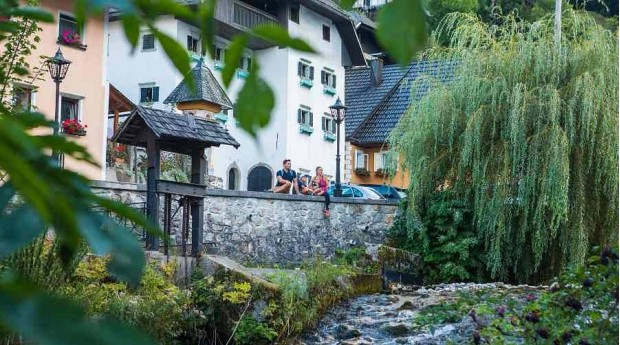- KEYBOARD NAVIGATION
- DISABLE ANIMATIONS
- HIGH CONTRAST
- BLACK & WHITE CONTRAST
- INCREASE TEXT SIZE
- DECREASE TEXT SIZE
- MARK TITLES
- MARK LINKS
- UNDERLINE LINKS
Circular Trail Around Kropa’s Sights of Interests
A pleasant walk through picturesque Kropa – a former centre of iron forging – acquaints visitors with the village’s wealth of cultural heritage. The circular trail leads past the most important sights of interest and reveals magnificent views of the area.
The walk through Kropa begins at the parking area next to the pool of the former lower foundry. Through a system of water channels and barriers the reservoir provided water energy for Kropa’s Lower foundry – an iron ore smelter, which was erected close to the reservoir in the mid 16th century.
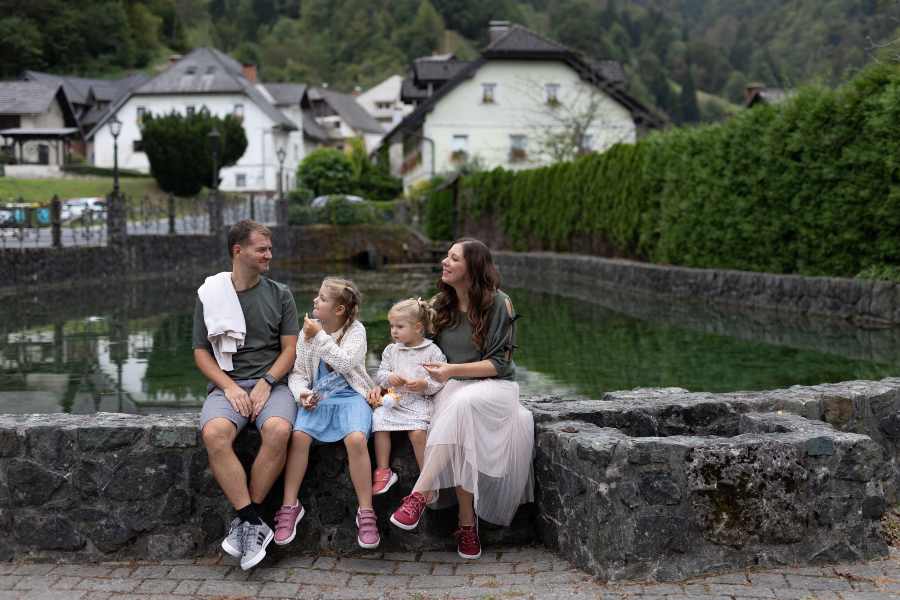
Start the circular route at the parking area in front of the water reservoir.
Go down the stairs to the road and continue straight ahead to the Kropa Cultural Centre. The centre is worth a visit because of the open-air exhibition in front of it as well as its magnificent wrought-iron entrance door. From the Centre, return towards the reservoir, but just before reaching it follow the road to the right. This road leads to the bridge over the Kroparica stream and further to the so-called Gosposka gasa street, then turn left. Continue past old houses with shaped portals and wrought-iron details to house number Kropa 73. Turn right onto the driveway where steps can be seen ahead that lead up on the right-hand side behind the house. Ascend the steps that lead to the road, then turn left and head towards the church.
There is a beautiful view of the village from St. Lenart’s church. The church as it stands today is dedicated to St. Lenart, who, among others, is the patron saint of blacksmiths. It was built in 1481. The interior is adorned by works of Slovenian artists, among which the wrought-iron sacrificial altar stands out, made by the locals Jože Šolar and Jože Bertoncelj.
After enjoying the view, take the steps opposite the church back down to Gosposka Street, then turn right to reach the central square, known as Plac. Due to its urban features and preserved technical, cultural and historical monuments, Kropa is one of the most important historical places in Slovenia. Since 1953, the village centre has been a listed cultural monument of national importance.
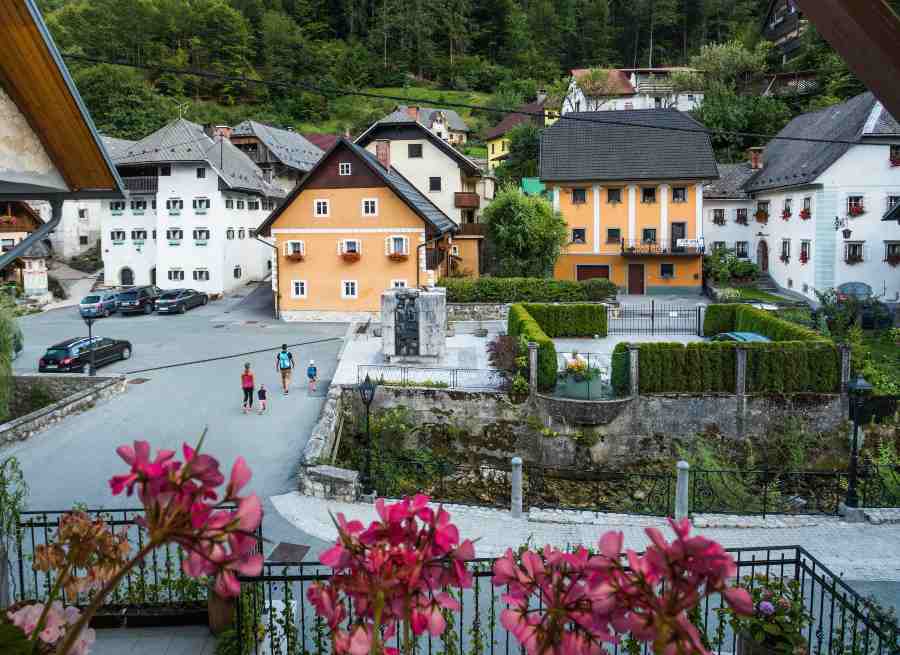
Plac, the picturesque central area of the settlement, is surrounded by magnificent blacksmiths’ houses.
Continue on the same side of the Kroparica stream, past the house of Jože Bertoncelj – an expert in decorative wrought iron. The house can be identified by the beautiful wrought iron dragon in front of the house. Continue past Macol House, a former school that stands out due to its elements typical of Renaissance and Baroque manor houses. Next head to the Vigenjc Vice forge, the only preserved manual nail-making workshop, where in the summer, once a week, visitors can experience a live demonstration of manual nail-making. The live goings-on can also be watched via the link on the QR code, which can be found on the information board in front of the Vigenjc forge.
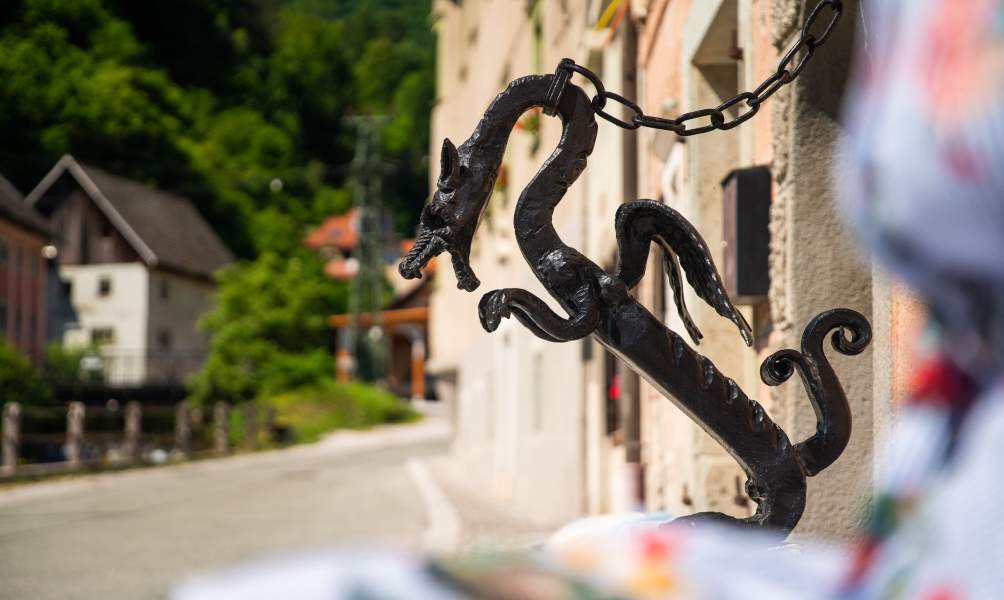
The Kropa dragon in front of the house of the blacksmith Jože Bertoncelj – an expert in wrought ironwork.
Continue past the park towards the part of Kropa called Kotel. Walk past the garages to reach a bridge. Cross the bridge to arrive in the area of the Kotel Learning Park. Take time to see part of the former Matiček House, the Bodlaj vigenjc nail-making workshop, and the walls of a former distillery.
From here, continue along the narrow road past the Kroparica hostel, then turn right towards the Slovenian furnace (Slovenska peč) – the oldest partially preserved iron smelter in Slovenia (dating back to the 14th century), or return to the Vigenjc Vice nail-making workshop. Continue along the route and turn right over the first bridge. On the other side of the Kroparica river, turn left and continue past the Pr Kovač inn, where a culinary stop is recommended, as the inn is famous for its excellent traditional Kropa dishes. While walking along the street that leads to the central Plac, take note of the artistically designed lanterns on the houses and other decorations.
On the right, just before reaching Plac, the route leads to the Fovšaritnica Museum House, one of the better preserved blacksmith houses with a building design from the 17th century. The house was named after the conditions that were typical of the Kropar residential culture, i.e. a shared kitchen with several fireplaces in the hall. Due to the large number of families living in the house and the shared fireplaces, envy (Slovene: foušija) often arose between the housewives when they looked in each other’s pots and pans.
The route, this time on the other side of the stream, leads back to Plac where the 17th century Florian shrine stands. The painting on the shrine is reminiscent of the time when Bishop Tomaž Hren preached against the Reformation here in 1605 and then elevated Kropa to an independent parish in 1620.
Continue along the right bank of the Kroparica River to soon reach the imposing building of the Iron Forging Museum, which is worth a visit. On the first floor there is a model of the settlement, the forges and nail-making workshops, as well as a collection of nails, blacksmithing and other tools, and interesting items. The upper floor is dedicated to wrought iron products made by Jože Bertoncelj.
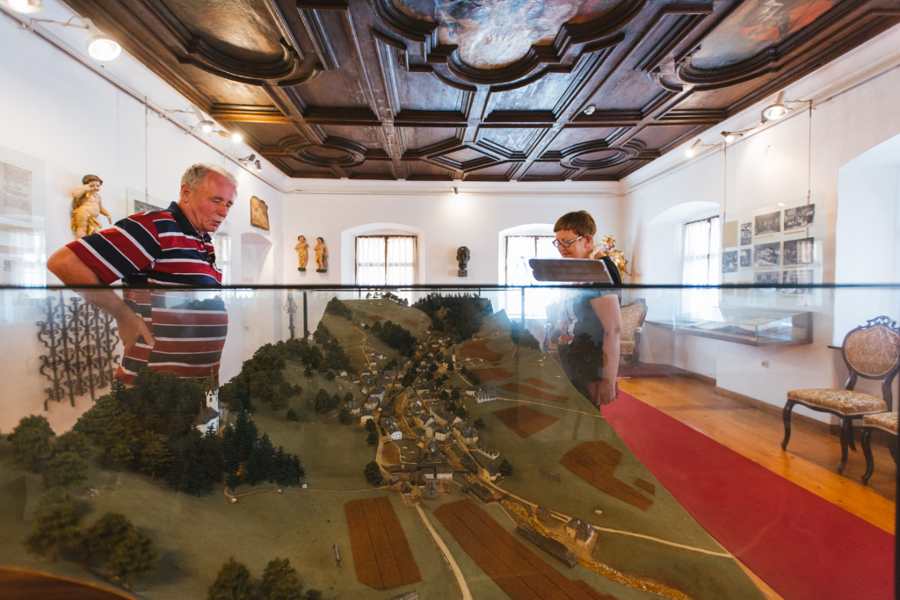
In addition to the extensive collections of objects, the interior of the Iron Forging Museum is supplemented by numerous models.
From the museum the route leads towards the pond and back to the starting point. An optional extra, just before reaching the parking area, is to hike up to to the Church of the Mother of God, known locally as Kapelca.
Lengthen the route:
OPTION 1: From the Learning Park in Kotel, continue to the Slovenian furnace (Slovenska peč) – a preserved iron smelter dating from the 14th century – and from there take the path to explore the bed of the Kropa stream and its spring.
OPTION 2: at the starting point near the parking area, extend the route by hiking up to the Church of the Mother of God. The church stands on the spot where, according to local legend, seven boys found an image of Mary and built an altar for her. After a series of miracles, more and more pilgrims began to visit, however, this tradition later died away.
Related news
The history of iron forging particularly comes to life through numerous models which will be set in motion just for you.
One of the best preserved ironworkers houses in Kropa can be visited by prior arrangement.
You will be fascinated by the preserved foundry for the hand forging of nails, the only of its type in Slovenia.
There are two churches in Kropa. The parish church of St. Leonard is older, larger and easier to reach.


